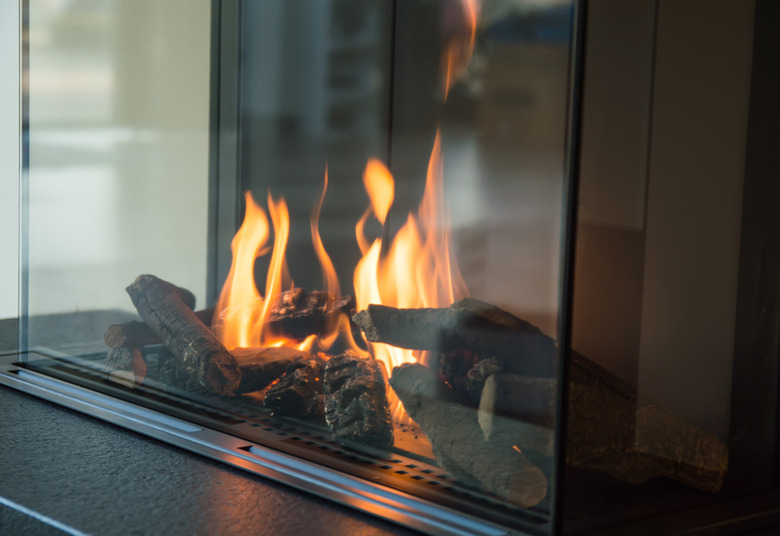How To Prevent Creosote Buildup With Borax
Creosote buildup settles in chimneys after burning wood or artificial logs. It contains chemical byproducts that become airborne as the wood burns, and then solidifies onto the chimney walls as it cools. Creosote is incredibly flammable, and if a stray spark ignites creosote inside the chimney, the entire chimney can catch fire and spread through the house. Because chimney fires are a serious danger, regular creosote removal is important.
But not all creosote buildup is the same. If you want to try to use a creosote remover on your own, you'll need to do so on a regular basis. Older creosote requires heavy-duty equipment and careful removal, which is best left to the pros.
The Different Types of Creosote
The Different Types of Creosote
Before you begin, it's important to note that three types of creosote exist, called "stages" or "degrees," according to Chimney Solutions. Do-it-yourself creosote remover will only work on stage one creosote, which is "young" creosote that hasn't been sitting on your chimney walls for very long and is still flaky and able to easily jostle off.
Stage two creosote takes on a shiny appearance and has a higher tar content. This type of creosote is quite solid and won't be easy to remove unless you have the right equipment and training.
If it looks like you have tar dripping from your chimney, then you're dealing with stage three creosote, which has a lot of volume and puts your chimney at great risk for a fire due to the sheer quantity of flammable material. Stage three creosote is actually somewhat easy to remove since it has a spongy texture, but it's still best to let a professional handle this type of creosote to ensure your chimney is thoroughly cleaned.
Borax to Prevent Creosote Buildup
Borax to Prevent Creosote Buildup
One popular DIY trick to prevent creosote buildup is to add a mixture of borax and salt to your fire approximately every two weeks. This can help the early stages of creosote to flake off and fall down into the fire. To do this, simply mix 4 cups of borax with 1 cup of salt (basic table salt is fine).
Build a hot fire and let it burn for about 10 minutes, and then add another log and let the temperature cool a bit. Then, carefully sprinkle the borax and salt mixture over the logs, covering as much of the burn area as possible. Let the fire continue to burn as normal.
Alternatively, you can buy a creosote log to burn in your fireplace or wood stove in order to clear creosote from the chimney. If you use your fireplace or wood-burning stove on a daily basis, try burning a hot fire twice a day to send hot air through the chimney that can prevent creosote build up. Whatever method you choose, it's wise to start only after having your chimney professionally cleaned so that you know you're not dealing with stage two or stage three creosote.
Tips for Preventing Creosote Buildup
Tips for Preventing Creosote Buildup
You can also reduce your risk of a chimney fire by trying to have a "clean burn" whenever possible. This means that you only burn well-seasoned wood and ensure the fire receives plenty of air flow. Also, because creosote solidifies in cooler air, you can prevent creosote buildup by making sure the chimney is as warm as possible. This involves warming the flue before starting a fire and ensuring your chimney is properly insulated.
Due to the risk associated with cleaning chimneys, if you have any questions or concerns, don't hesitate to reach out to a professional chimney sweep for a consultation and cleaning.
